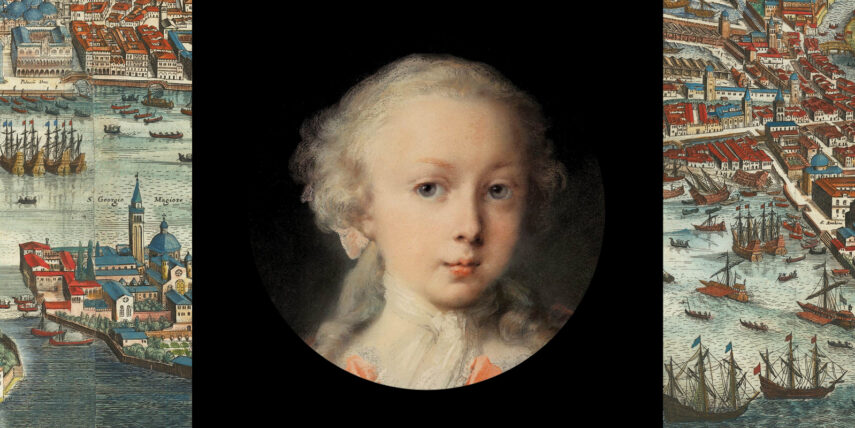
Agata della Pietà
Born in Venice on 24 March 1712, Agata was missing the fingers of her left hand. Given up to the orphanage known as the Ospedale della Pietà soon after her birth, baby Agata would have been passed through the small revolving door (called a scaffetta) in the exterior wall of the building. If you were a young girl with no parents, growing up in eighteenth-century Europe, then the Ospedale della Pietà in Venice was quite possibly the best place for you to be. Here, Antonio Vivaldi had established a music education program for girls that was second to none. Agata was well-educated and became a star student, performing as a soprano soloist and composing cantatas. When she had completed her education, she was employed by the Pietà, first as a singing teacher and later, also as the administrator (or Priora) of the institution. She remained at the Pietà until her death in 1769.
After a series of Australian performances, the ACC will gift Agata’s Cantata to the citizens of Venice during a European premiere performance in the Venetian Baroque splendour of the Pisani Palace. Read the detailed program notes
WHAT’S ON THE PROGRAM?
Giaches de Wert (1535–96) The Madrigal, Cara la vita mia
Claudio Merulo (1533–1604)
The Mass, Cara la vita mia (Venice, 1609)
Claudio Merulo, considered the finest organist in Italy, was appointed second organist at St Mark’s Venice in 1557 and was promoted to first organist in 1566. The reason for his rapid departure from Venice in 1584 is unknown.
Vicente Lusitano (c.1520–c.1561) Heu me Domine from Treatise on Counterpoint (Venice, c.1561)
When his Liber primus epigramatum was published in 1551, Lusitano, who was of African and Portuguese heritage, became the first published black composer. Watch a performance of this work
Claudio Monteverdi (1567–1643) Lauda Jerusalem (1651)
Agata della Pietà (1712–69) The Cantata, Ecce nunc
For two soprano and alto soloists, choir and orchestra
A cantata in six movements, this is one of three compositions by Agatha in the archive of Venice’s Biblioteca Benedetto Marcello. The cantata consists of three tutti movements, punctuated by three arias, for which the solo voice parts are lost. Australian harpsichordist, Elizabeth Anderson reconstructed the work in 2022, providing the missing choral parts for soprano and tenor and a viola part, as well as solo vocal lines to match the surviving continuo and solo violin parts for the arias. Watch a performance of this work.
The first performance of the newly reconstructed work took place in the town of Terang, a farming community in Western Victoria, with a population of about 2,000, two and a half hours’ drive from Melbourne. Whether you measure in migli (a Venetian miglio, or mile was defined as 1000 passi, or steps) or kilometres, there isn’t anywhere on earth much further away from Venice than Terang. The work toured regional Victoria and was premiered in Melbourne on 7 May 2022. Read more about Agata’s Cantata.
Antonio Vivaldi (1678–1741) Magnificat (RV610)
For two soprano, alto and tenor soloists, choir and orchestra.
